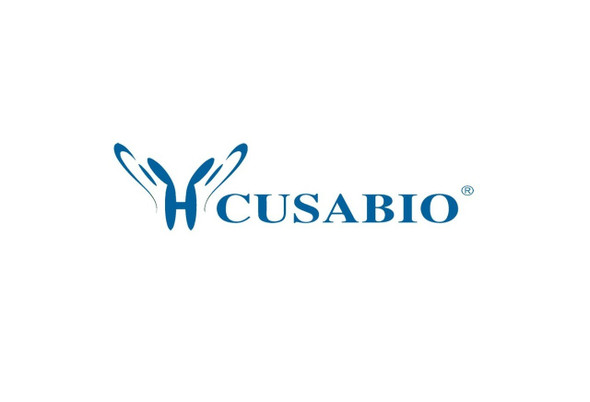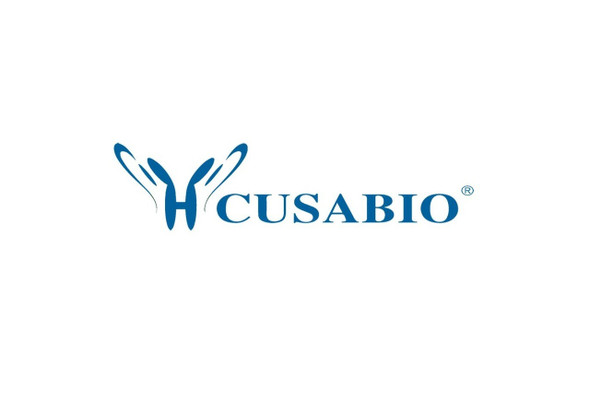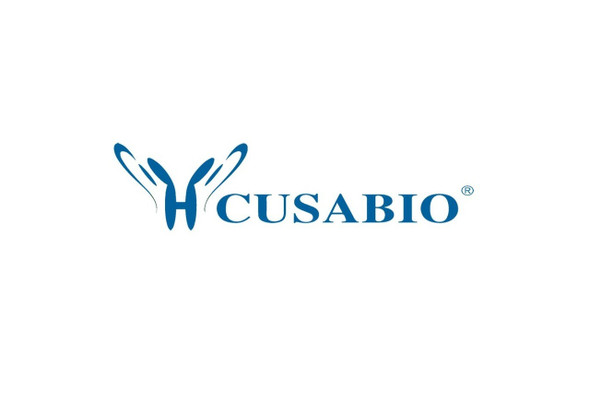Cusabio Human Recombinants
Recombinant Human Alpha-ketoglutarate-dependent dioxygenase FTO (FTO) | CSB-EP880154HU
- SKU:
- CSB-EP880154HU
- Availability:
- 3 - 7 Working Days
Description
Recombinant Human Alpha-ketoglutarate-dependent dioxygenase FTO (FTO) | CSB-EP880154HU | Cusabio
Alternative Name(s): Fat mass and obesity-associated protein;U6 small nuclear RNA (2'-O-methyladenosine-N(6)-)-demethylase FTO;U6 small nuclear RNA N(6)-methyladenosine-demethylase FTO;mRNA (2'-O-methyladenosine-N(6)-)-demethylase FTO;Short name: m6A(m)-demethylase FTO;mRNA N(6)-methyladenosine demethylase FTO;tRNA N1-methyl adenine demethylase FTO
Gene Names: FTO
Research Areas: Cardiovascular
Organism: Homo sapiens (Human)
AA Sequence: MKRTPTAEEREREAKKLRLLEELEDTWLPYLTPKDDEFYQQWQLKYPKLILREASSVSEELHKEVQEAFLTLHKHGCLFRDLVRIQGKDLLTPVSRILIGNPGCTYKYLNTRLFTVPWPVKGSNIKHTEAEIAAACETFLKLNDYLQIETIQALEELAAKEKANEDAVPLCMSADFPRVGMGSSYNGQDEVDIKSRAAYNVTLLNFMDPQKMPYLKEEPYFGMGKMAVSWHHDENLVDRSAVAVYSYSCEGPEEESEDDSHLEGRDPDIWHVGFKISWDIETPGLAIPLHQGDCYFMLDDLNATHQHCVLAGSQPRFSSTHRVAECSTGTLDYILQRCQLALQNVCDDVDNDDVSLKSFEPAVLKQGEEIHNEVEFEWLRQFWFQGNRYRKCTDWWCQPMAQLEALWKKMEGVTNAVLHEVKREGLPVEQRNEILTAILASLTARQNLRREWHARCQSRIARTLPADQKPECRPYWEKDDASMPLPFDLTDIVSELRGQLLEAKP
Source: E.coli
Tag Info: N-terminal 10xHis-tagged and C-terminal Myc-tagged
Expression Region: 1-505aa
Sequence Info: Full Length
MW: 65.7 kDa
Purity: Greater than 85% as determined by SDS-PAGE.
Relevance: RNA demethylase that mediates oxidative demethylation of different RNA species, such as mRNAs, tRNAs and snRNAs, and acts as a regulator of fat mass, adipogenesis and energy homeostasis (PubMed:22002720, PubMed:26458103, PubMed:28002401, PubMed:30197295, PubMed:26457839, PubMed:25452335). Specifically demethylates N6-methyladenosine (m6A) RNA, the most prevalent internal modification of messenger RNA (mRNA) in higher eukaryotes (PubMed:22002720, PubMed:26458103, PubMed:30197295, PubMed:26457839, PubMed:25452335). M6A demethylation by FTO affects mRNA expression and stability (PubMed:30197295). Also able to demethylate m6A in U6 small nuclear RNA (snRNA) (PubMed:30197295). Mediates demethylation of N6,2'-O-dimethyladenosine cap (m6A(m)), by demethylating the N6-methyladenosine at the second transcribed position of mRNAs and U6 snRNA (PubMed:28002401, PubMed:30197295). Demethylation of m6A(m) in the 5'-cap by FTO affects mRNA stability by promoting susceptibility to decapping (PubMed:28002401). Also acts as a tRNA demethylase by removing N1-methyladenine from various tRNAs (PubMed:30197295). Has no activity towards 1-methylguanine (PubMed:20376003). Has no detectable activity towards double-stranded DNA (PubMed:20376003). Also able to repair alkylated DNA and RNA by oxidative demethylation: demethylates single-stranded RNA containing 3-methyluracil, single-stranded DNA containing 3-methylthymine and has low demethylase activity towards single-stranded DNA containing 1-methyladenine or 3-methylcytosine (PubMed:18775698, PubMed:20376003). Ability to repair alkylated DNA and RNA is however unsure in vivo (PubMed:18775698, PubMed:20376003). Involved in the regulation of fat mass, adipogenesis and body weight, thereby contributing to the regulation of body size and body fat accumulation (PubMed:18775698, PubMed:20376003). Involved in the regulation of thermogenesis and the control of adipocyte differentiation into brown or white fat cells (PubMed:26287746). Regulates activity of the dopaminergic midbrain circuitry via its ability to demethylate m6A in mRNAs (By similarity). Plays an oncogenic role in a number of acute myeloid leukemias by enhancing leukemic oncogene-mediated cell transformation: acts by mediating m6A demethylation of target transcripts such as MYC, CEBPA, ASB2 and RARA, leading to promote their expression (PubMed:28017614, PubMed:29249359)
Reference: "Meclofenamic acid selectively inhibits FTO demethylation of m6A over ALKBH5." Huang Y., Yan J., Li Q., Li J., Gong S., Zhou H., Gan J., Jiang H., Jia G.F., Luo C., Yang C.G. Nucleic Acids Res. 43:373-384(2015)
Storage: The shelf life is related to many factors, storage state, buffer ingredients, storage temperature and the stability of the protein itself. Generally, the shelf life of liquid form is 6 months at -20?/-80?. The shelf life of lyophilized form is 12 months at -20?/-80?.
Notes: Repeated freezing and thawing is not recommended. Store working aliquots at 4? for up to one week.
Function:
Involvement in disease:
Subcellular Location:
Protein Families:
Tissue Specificity:
Paythway:
Form: Liquid or Lyophilized powder
Buffer: If the delivery form is liquid, the default storage buffer is Tris/PBS-based buffer, 5%-50% glycerol. If the delivery form is lyophilized powder, the buffer before lyophilization is Tris/PBS-based buffer, 6% Trehalose, pH 8.0.
Reconstitution: We recommend that this vial be briefly centrifuged prior to opening to bring the contents to the bottom. Please reconstitute protein in deionized sterile water to a concentration of 0.1-1.0 mg/mL.We recommend to add 5-50% of glycerol (final concentration) and aliquot for long-term storage at -20?/-80?. Our default final concentration of glycerol is 50%. Customers could use it as reference.
Uniprot ID: Q9C0B1
HGNC Database Link: N/A
UniGene Database Link: N/A
KEGG Database Link: N/A
STRING Database Link: N/A
OMIM Database Link: N/A










